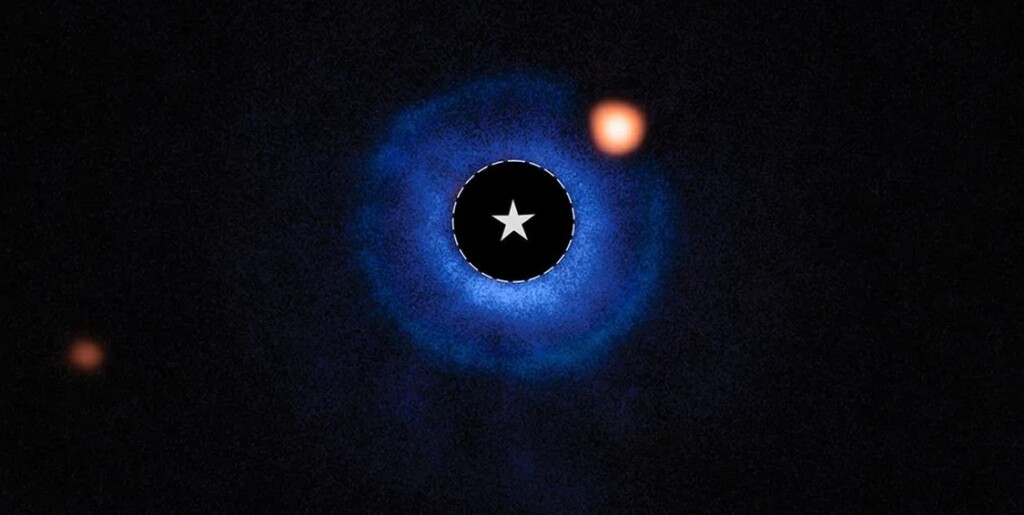 TWA 7 is blocked in this image by the black circle, while the planet glows in orange – credit, NASA, ESA, CSA, Anne-Marie Lagrange (CNRS, UGA), Mahdi Zamani (ESA / Webb)
TWA 7 is blocked in this image by the black circle, while the planet glows in orange – credit, NASA, ESA, CSA, Anne-Marie Lagrange (CNRS, UGA), Mahdi Zamani (ESA / Webb)Since its debut in 2021, the James Webb Space Telescope has dazzled viewers with its infrared images of galaxies, nebulae, stars, and even our own solar system’s planets.
Now, the most expensive telescope ever made has unveiled a new trick—a coronagraph, which allows it to block the light of a star and see what small objects are orbiting it. In this case, it performed the first direct photographing of an exoplanet in human history; probably.
The image found a faint source of infrared light in a disk of debris orbiting TWA 7, a red dwarf star around 111 light years from Earth. With the outstanding chance of the object being a background galaxy at more than 0%, the researchers can’t say for certain it’s a planet, but they suspect very much that it is—around the size of Saturn and sitting at a comfortable 120° Fahrenheit.
Though astronomers have detected well over 5,000 exoplanets so far, each one has been done through indirect methods, such as the “transit method.” The transit method sees an astronomer train a telescope on a star, and monitor for predictable drops in the level of light from the star that would indicate a planet orbiting it. The transit method can also work through measurements of gravity since passing planets’ gravitational fields can cause their host stars to “wobble.”
By contrast, the coronagraph will be much more straight forward, and TWA 7 b will likely be the first of many that the Webb telescope will discover.
One can think of the coronagraph as an on-demand eclipse service. The instrument positions a disk inside the lens of the imaging device to perfectly eliminate the star’s light from entering the sensor within a degree of micrometers. With the pollution of the star’s light gone, small things—in this case an exoplanet—can be seen.
RECENT WORK FROM JAMES WEBB
“Our observations reveal a strong candidate for a planet shaping the structure of the TWA 7 debris disk, and its position is exactly where we expected to find a planet of this mass,” Anne-Marie Lagrange, lead author of the study and an astrophysicist at the French National Center for Scientific Research, said in a statement released by NASA on the discovery.
The source is located in a gap in one of three dust rings that were discovered around TWA 7 by previous ground-based observations. The object’s brightness, color, distance from the star, and position within the ring are consistent with theoretical predictions for a young, cold, Saturn-mass planet that is expected to be sculpting the surrounding debris disk.
These visible rings or gaps are thought to be created by planets that have formed around the star, but such a planet has yet to be directly detected within a debris disk. If TWA 7 b is confirmed to be such, it would mark a major moment in astronomy.
SHARE This Great New Trick From Our Expensive Space Telescope…
Source link

